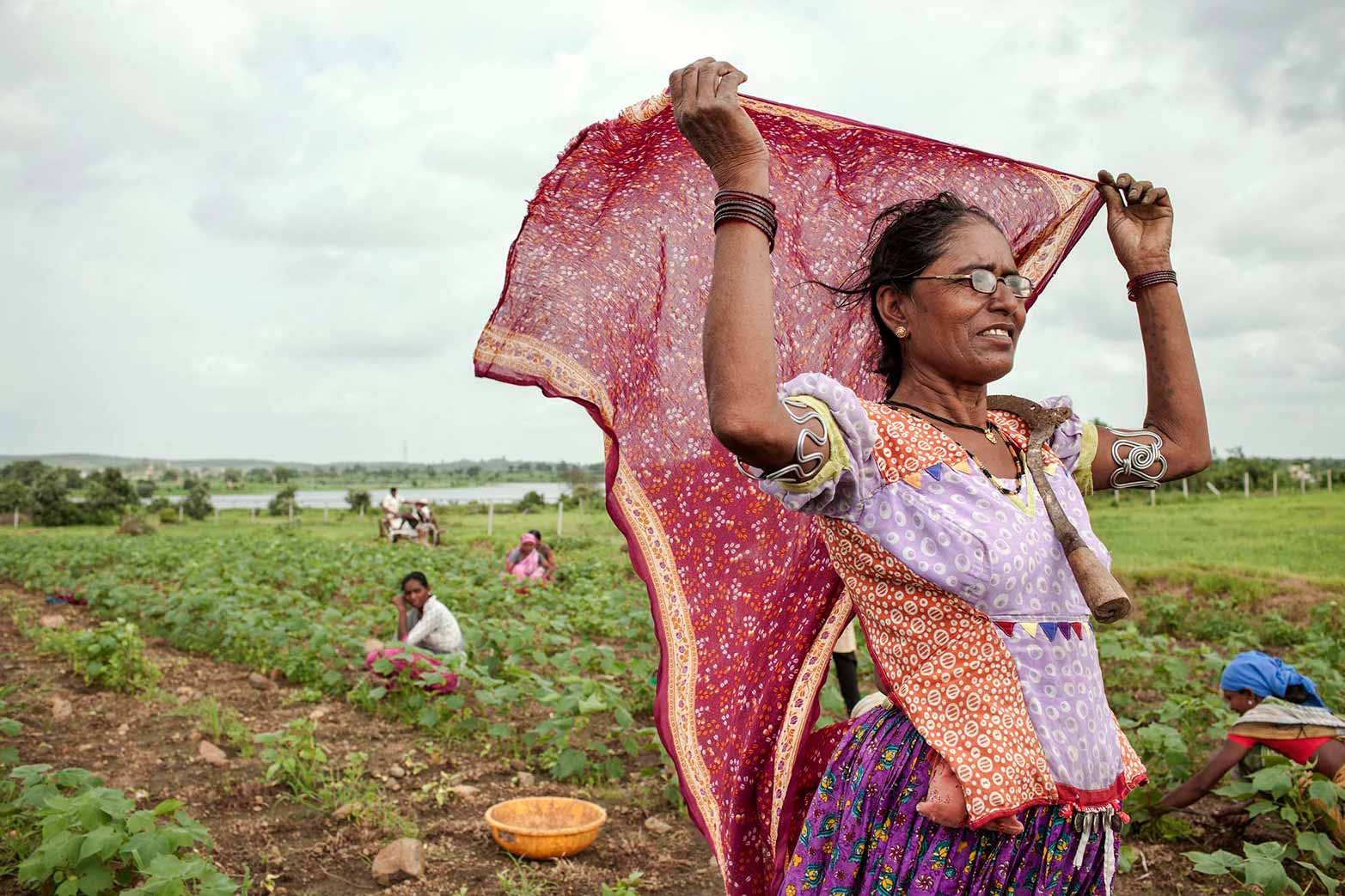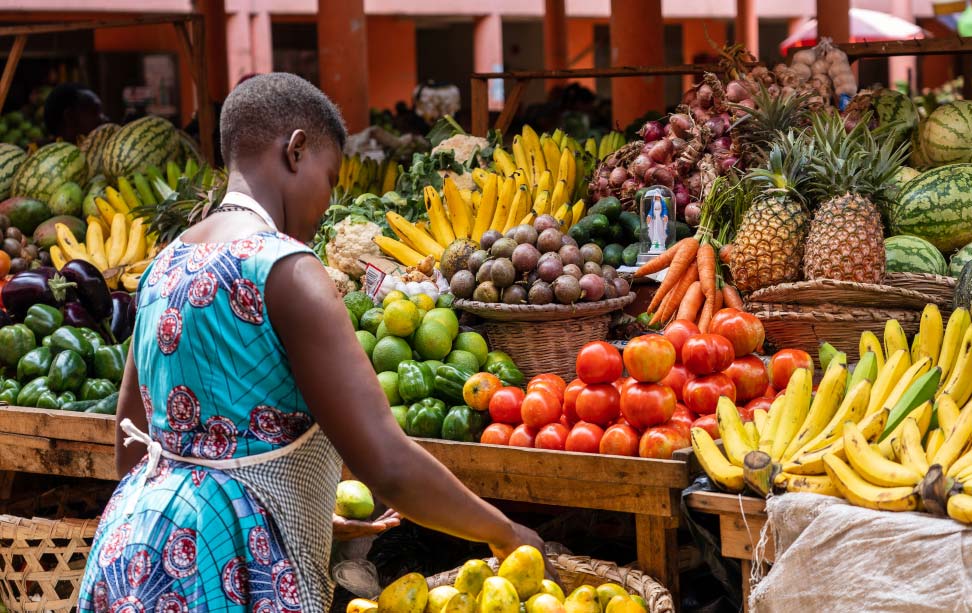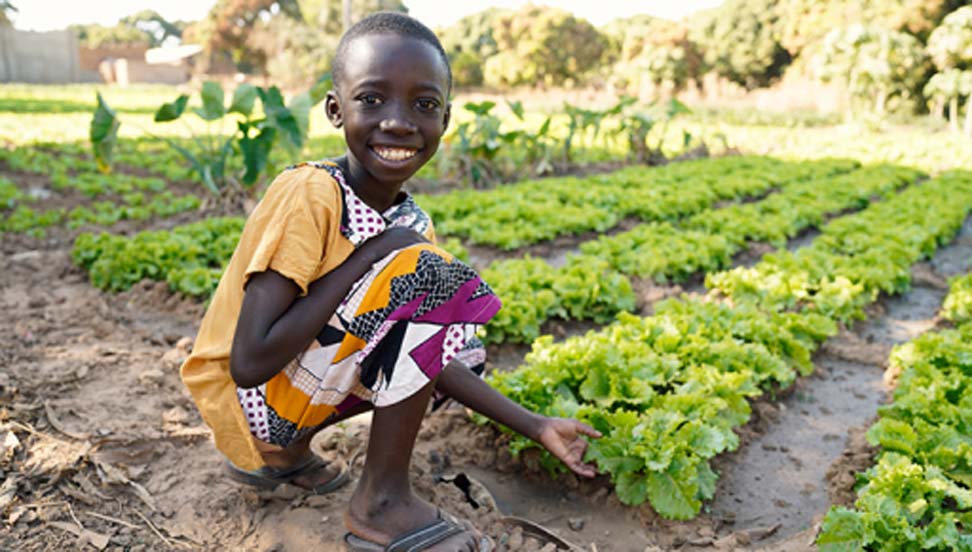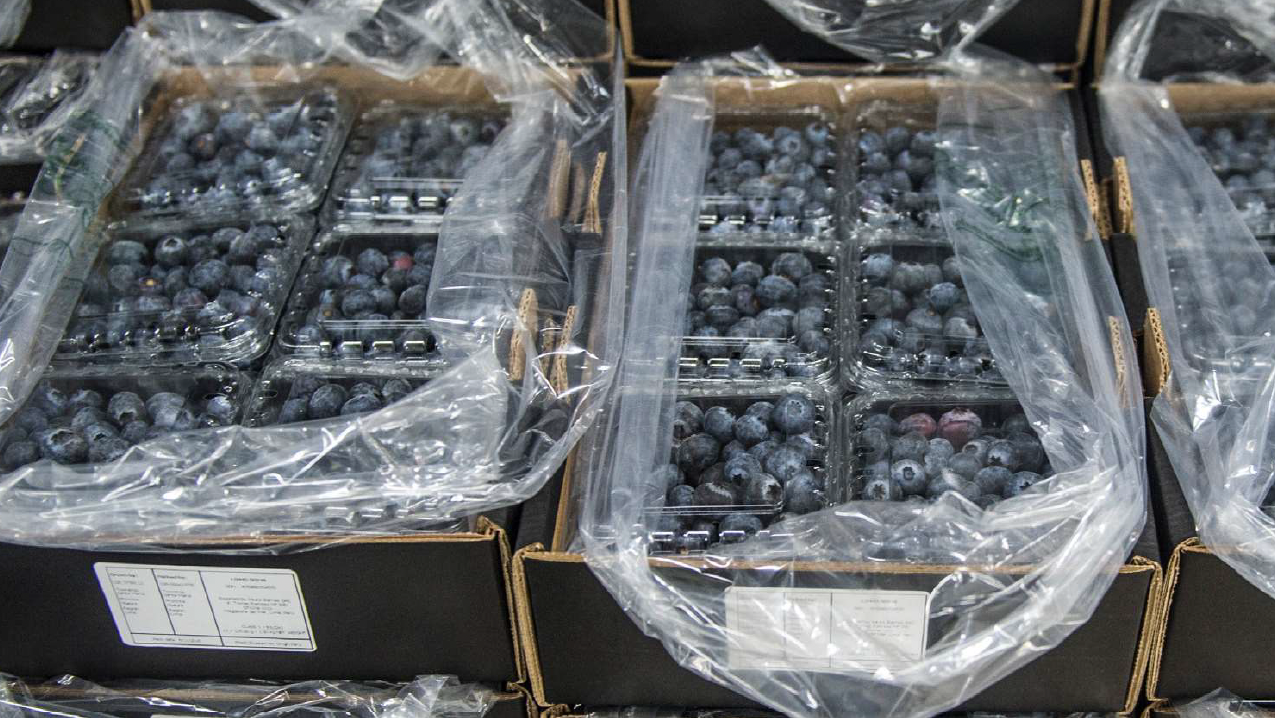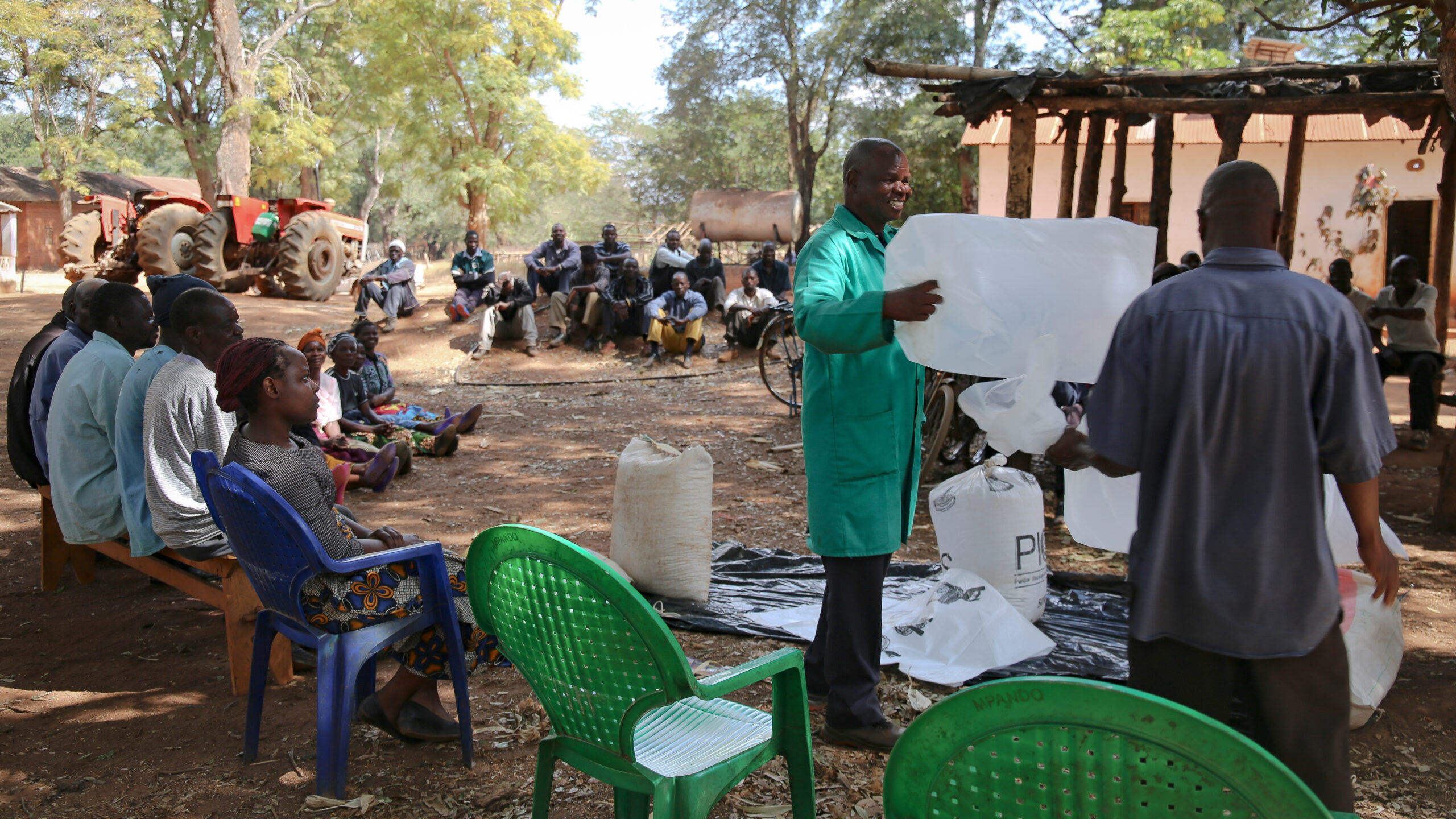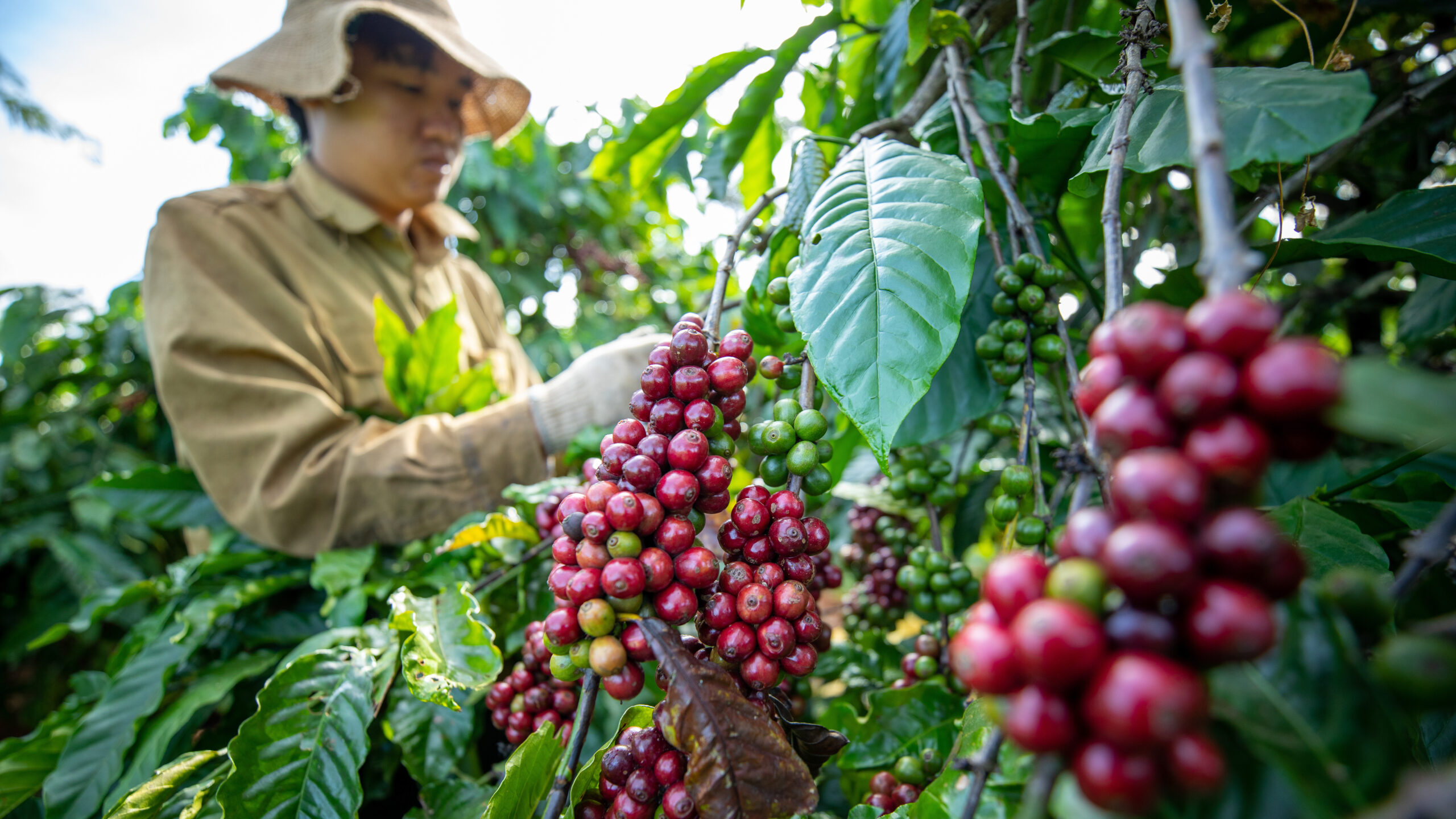Over the past 10 years, Peru has grown to become the second-largest producer of blueberries in the world after the United States and the world’s largest exporter. How did a country that produced almost no blueberries as late as 2010 manage this feat?
The answer lies in a strategic economic vision—driven by the private sector with significant public sector support—that capitalizes on favorable geographic and climatic conditions. Peru identified new markets that allowed it to offer blueberries out of season. It improved quality and expanded production through an action plan focused on technological innovations, pest control, and irrigation policies. These choices enabled Peru to scale up exports and very rapidly establish itself as a key player in the global blueberry trade. Its story provides lessons for developing countries seeking to build export industries and enter sometimes volatile international markets.
Rise in production and exports
From 2010-2015, Peru represented less than 2% of global blueberry production. In 2023, that figure reached 19%. The quick expansion effectively displaced some U.S. global market share; despite a large increase in its own production over the same period, the U.S. market share declined from 49% in 2010 to 27% in 2023 (Figure 1).
Figure 1
As markets and production have evolved in recent decades, the countries exporting blueberries have shifted significantly. Early on, Canada and the U.S. dominated the market, but Chile became a more important exporter starting in the 2000s. Then came Peru’s sudden emergence in 2015, followed by steady annual increases in its market share. In 2022, Peru consolidated its position as the world’s leading exporter, reaching its peak with 41% of the market. In 2023 it sustained its position with 36% (Figure 2).
Figure 2
What’s behind the sector’s growth?
Peru’s current dominant market position is the result of a favorable climate, improved genetics that helped to increase productivity, and public and private investments in value-chain technologies that have improved logistics and boosted exports.
A significant advantage of Peruvian agriculture is the country’s climate, which allows for year-round production in open fields. The temperate conditions along the coast enable producers to select the most advantageous time for harvesting. Most aim for peak harvest between September and November, just after the end of the harvest season in the U.S. and other northern hemisphere countries. This timing allows them to avoid direct competition with U.S. supplies and instead take advantage of natural gaps in the market, facilitating access to new markets such as Europe and Asia (Figure 3).
Figure 3
Inka’s Berries exemplifies how private sector innovation has leveraged these advantages to contribute to Peru’s blueberry expansion. In 2006, the company, in collaboration with the Institute of Biotechnology (IBT) of the National Agrarian University La Molina, began two years of trials testing 14 Chilean blueberry varieties to determine which could best adapt to Peru’s climatic conditions. Four varieties—Biloxi, Duke, Sharpblue, and Legacy—proved suitable for growth on the Peruvian coast, with Biloxi being the most suitable. Building on this foundation, Inka’s Berries partnered with the U.S. University of Georgia to develop new, climate-adapted Peruvian varieties, named after the family of Inka’s Berries founder Carlos Gereda. With an initial investment of just $300, the company grew into a major supplier of high-quality blueberry plants, now generating $3 million annually and serving both small farmers and large exporters like Camposol, further driving the sector’s rapid growth.
Peru’s continuous harvesting capability and flexibility give it a competitive edge over countries reliant on seasonal farming. Here, it was the Biloxi variety that stood out. Optimal for production from late August to early December, Biloxi blueberries had a key market advantage, avoiding direct competition with northern hemisphere supplies (harvested May-August).
Improving production and productivity, meanwhile, was another key factor in Peru’s rise. Today, more than 62 blueberry varieties are registered or under development there, with research focusing on high productivity and uniform yields. Yields surged from 2,500 kg/ha in 2013 to 13,400 kg/ha in 2023, the highest in the world, significantly surpassing the global average of 6,500 kg/ha (Figure 4).
Figure 4
Public and private investment in value chain infrastructure and logistics have also been central to Peru’s blueberry expansion.
In terms of fruit profile, Peruvian growers prioritize blueberries that are vigorous, firm, extra-large, sweet, and less acidic, with a crunchy texture. These qualities make the berries ideal for international markets; however, ensuring they remain unchanged from production to consumption requires specialized logistics. A combination of public and private investment has helped build up a sophisticated transport infrastructure for perishables, including convenient routes and shipping facilities, coordinated planning, refrigerated trucks, containers, cold storage warehouses, and specialized container yards, all essential for maintaining the fruit’s quality.
Additionally, packaging must be free from fungi and pathogens, which is crucial for both fresh and frozen exports. As of now, 99% of fresh and frozen blueberries are exported by sea, with the remaining 1% sent by air, underscoring the importance of an efficient and well-coordinated logistics system to maintain the fruit’s quality throughout its journey.
The Peruvian government has played a key role in supporting the industry, notably by maintaining a robust agricultural phytosanitary agency and making large investments in irrigation projects, diverting and efficiently distributing river water to create new agricultural land in previously arid regions for various crops.
These policies, coupled with favorable tax laws, have helped push the blueberry industry to its peak. The government enacted the Agrarian Promotion Law (Law No. 27360) in 2000, which reduced the income tax rate for agricultural enterprises to 15% and accelerated depreciation for investments in agriculture, making the sector attractive to investors. However, it should be noted that the law was modified in 2021, raising the income tax to 30%. These modifications could lead to a decline in Peru’s global market share and productivity.
Peruvian trade policies
The blueberry industry has also benefited from a diverse range of national trade policies targeted at strengthening the agriculture sector. The Ministry of Agriculture’s 2020 Supreme Decree, for example, authorizes the allocation of over $128.5 million to facilitate exports from agricultural micro-, small-, and medium-sized enterprises (MSMEs) (Figure 5). This policy aims to boost export competitiveness, though its focus on MSMEs could potentially lead to market distortions. Meanwhile, liberalizing policies have also been introduced, exemplified by Law 31110 passed by the Peruvian Congress, which revised fiscal incentives for agro-industrial and agricultural companies in order to encourage sustainable growth and competitiveness.
Figure 5
A significant focus of these measures is tax or social insurance relief, providing much-needed financial breathing space for agricultural enterprises, and state loans, which offer direct financial support to enhance productivity and investment in the sector. Additionally, subsidies are employed to incentivize local production, while loan guarantees aim to reduce credit risks for lenders, encouraging financial institutions to support agricultural businesses. Import tariffs are also part of the policy toolkit, potentially protecting domestic producers from foreign competition—but with implications for market efficiency and trade flows.
These diverse interventions, combined with the export incentives, reflect a strategic approach by the Peruvian government to address immediate financial constraints, foster competitiveness, and stimulate long-term growth in the agriculture sector (Figure 6).
Figure 6
Main Peruvian blueberry export destinations
Peruvian blueberries benefit from the U.S.-Peru Free Trade Agreement (PTPA), which allows duty-free exports to the U.S. The agreement, signed in 2009, has helped the agricultural sectors of both countries. A significant amount of U.S. blueberry genetics (in the form of in-vitro plants) has been exported to Peru, also at a zero tariff rate, where it is grown and harvested and the fruit is shipped back for U.S. consumption.
In addition to eliminating tariffs, the PTPA eliminated the Merchandise Processing Fee on goods from Peru, making Peruvian blueberries more affordable for U.S. importers. The agreement also tackles key issues that have facilitated Peru’s blueberry exports. Notably, it establishes mutual recognition of sanitary standards, ensuring that agricultural exports meet stringent U.S. safety and health regulations.
Additionally, the agreement includes capacity-building programs, particularly aimed at small- and medium-sized enterprises (SMEs) in Peru’s agricultural sector. These initiatives have empowered Peruvian farmers and exporters to better align with U.S. regulatory standards, further enhancing the trade relationship between the two countries.
Having built up its export capacity, what are Peru’s main markets for blueberries now? The U.S. accounts for more than half of its blueberry exports. The European Union follows with 23%, while China, a rapidly growing market, represents 8% (Figure 7). Peru has been gradually expanding blueberry exports into new markets—a byproduct of various trade agreements completed over the past 15 years; for instance, the Peru-China Free Trade Agreement (FTA), signed in 2009, has significantly increased exports of Peruvian agricultural products to China.
Figure 7
The impact of the Peruvian blueberry on the U.S. market
Thanks to imports from Peru and other southern hemisphere countries, blueberries are now available year-round in U.S. supermarkets, filling the gaps in domestic production. The growth of blueberry imports, driven by FTAs, has helped ensure a consistent supply throughout the year. This is an important factor in rising per capita consumption, which went from 0.27 kg per person in 2007 to 1.26 kg per person in 2022. (Figure 8).
Figure 8
While U.S. domestic production has risen to meet growing demand, its pace has lagged behind the rapid surge in imports. As imports have expanded, U.S. producers have faced intensified competition, prompting them to enhance efficiency and boost output. This combined growth in both domestic and imported supply has driven total blueberry availability to record levels. As a result, the U.S. now enjoys a more diverse and stable blueberry supply, benefiting both consumers and producers alike (Figure 9).
Figure 9
Conclusions: A success story and opportunities for the future
Peru's rise as the leading global exporter of blueberries is a remarkable success story that highlights the power of strategic vision, innovation, and international collaboration. With continued investment in research and development, coupled with a robust logistics network and policies that promote the sector, Peru aims to maintain and even expand its position in the global market.
However, looking ahead, this effort faces significant challenges. One is the prospect of a trade conflict with the new U.S. administration, which on April 2 announced a 10% “reciprocal” tariff on all goods originating from Peru. Implementation of tariffs on Peruvian blueberries would likely cut exports to the U.S. However, the trade landscape is complex; as discussed in a previous post, Peru could actually gain more access to the U.S. in the event that tariffs were applied only against key competitors such as Mexico and Canada.
A more far-reaching challenge is how Peru will adapt to the impacts of climate change, which could affect the country's short- and long-term agricultural productivity and the timing of harvests. Driving this point home, a 2023 heat wave reduced blueberry production by 25%. Additionally, as production volumes continue to grow, the logistics infrastructure will need to expand and evolve. Addressing these challenges will require ongoing innovation, investment in sustainable practices, and the development of new technologies to sustain growth.
Valeria Piñeiro is the Regional Representative for Latin America and the Caribbean (LAC) with IFPRI’s Markets, Trade, and Institutions (MTI) Unit; Yostina Girgies is a Quantitative Trade Economist with Global Trade Alert (GTA); Fernando Martín is GTA Head of Analytics; Juan Pablo Gianatiempo is a Research Analyst with IFPRI’s Markets, Trade, and Institutions (MTI) Unit; Joseph Glauber is a Research Fellow Emeritus with IFPRI's Director General’s Office. Opinions are the authors'.
